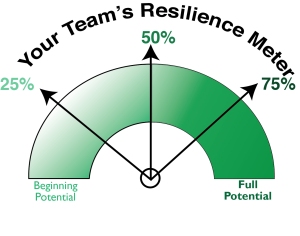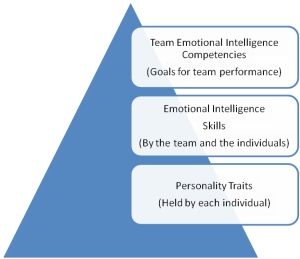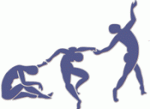The single biggest problem in communication is the illusion that it has taken place.
George Bernard Shaw
We are often asked to work with leaders, staff and organizations to guide them in improving their conflict resolution and communications skills. It is an honor to have this opportunity, one we don’t take lightly. Our intention is to facilitate a transformative process that results in sustainable behavior change. Reaching that long term goal requires investment by the individual, team or organization and the coach/facilitator.
Make no mistake about it; this is about making significant change and usually from deeply imbedded habits. Change is Hard Work – it’s possible yet it requires focused commitment and practice. Coaching individuals & teams to change, grow and produce requires:
- Understanding (the cognitive part)
- Commitment (the inspirational part)
- Practice (the determined part)
- Feedback (the collaborative part)
Success is built through following our four step process to improving conflict resolution skills. If sustainable change is desired, none of these steps can be missed and the dimensions of understanding, commitment, practice and feedback must be interwoven throughout the engagement.
Step One: Diagnosis and Willingness
The first step is making the decision to seek coaching and facilitation to help an individual or team to improve their conflict resolution and communication skills. You’ve heard the maxim that a stitch in time saves nine. However, it’s likely that by the time this decision is made there’s considerable challenge. Nevertheless, build these skills as soon as possible, the earlier you can intervene the better, even if you only save four stitches instead of nine.
At the beginning we normally ask the participant(s) to take one or two assessments, the EQi for individuals and teams will take the TESI or both the EQi and the TESI. All individual responses are confidential and used only to support development. This allows the participants and the coach to have data on the current state of skills and competencies and to highlight both areas that need to be improved as well as existing strengths that can facilitate the change process. The EQi2.0® reflects one’s overall well-being and ability to succeed in life. It explores the role that sixteen different elements of emotional well-being play in one’s life, by applying the fifteen skills in this model together with happiness as an indicator of emotional and social well-being. How one uses skills such as assertiveness, empathy, impulse control and optimism significantly influences their communications and conflict resolution success.
The TESI® (Team Emotional and Social Intelligence Survey®) is an internal 360 which measurers the team’s performance on seven team competencies including communications, conflict resolution and stress tolerance. Team members rate the team’s performance and then the aggregated results are presented to the team, with each individual’s scores remaining confidential. This allows team members to speak frankly with one another and quickly advances the discussion to building a successful action plan.
Willingness to honestly review current behaviors and results is central to making meaningful change. Fortunately, we don’t need 100% willingness at the beginning. There needs to be agreement to participate, however the vigor with which the participant(s) engage usually expands over time. As they perceive the possibility that they don’t have to stay stuck in this uncomfortable pattern and gain a sense of safety and trust in the process, willingness to make change usually grows significantly.
Step Two: Recognition and Ownership
Before a person buys into making personal change, he/she must recognize that the current way isn’t working. They need to take ownership of their own behavior and how that contributes to the difficult situations. At first it seems much easier to blame someone else – “It’s my bosses fault” or “It’s my team member’s fault” or “My organization doesn’t give us enough resources or time to do it right.” There could well be some truth in any of these statements, but they are not the point of the individual’s power. We can only change ourselves. Yet, fortunately, our changed behavior often leads to different responses. If an individual who used to create difficult conversations instead responds with collaborative invitations to work together, they are likely to receive a different response, although it may take a few times before the change is trusted.
Others, such as the team or organizational system likely contribute to the challenges. Often one person is treated as the Identified Problem yet it’s really a systemic issue. Frequently, the individual does contribute significantly to the difficulties occurring; however, they are very seldom alone in creating the difficulties. Thus in individual coaching we need to work with the individual to take full responsibility for their behaviors and to embrace learning to be more successful. Additionally, it is very useful when we also work with the team leader, the whole team or other key individuals to address how they are working together. Nevertheless, even if the others in the process won’t participate in recognizing and making changes, the coaching can be significantly beneficial for the individual. They will still gain skills that improve their engagement, are likely to enhance their productivity and reduce the negative feedback they receive. Sometimes these benefits play out more effectively in new situations rather than the on-going challenge area. The benefits of these behavior changes are certain to impact both their professional and personal lives as conflict shows up everywhere.
As a part of the recognition, the participant(s) need to understand what their challenges are as they respond to conflict. Are they avoiding, aggressive, or unreliable in that they don’t follow-through? These can be challenges for anyone, however, the problem to the team and organization is multiplied when these are challenges are held by the team leader. Then many people suffer the consequences of their poor conflict management.
Step Three: Learning New Behaviors
This is the role up your sleeves and build new habits time. It involves are four components of understanding, commitment, practice and feedback. As the cognitive awareness is developed of what occurs when their responses are curt and perfunctory, and the participant(s) become curious about what else they could do, we are starting to build commitment, the inspirational part. This is quite important to supporting the determination needed to start practicing the new ways. Finally, feedback will help to in fine tuning their approach, learning the right nuancing and getting it right. Both introverts and feisty people may not want to respond to feedback. This reluctance comes from different reasons, but can have the same consequences of not building the new relationships needed. Thus part of the coaching we do focuses on how to work with feedback as they begin using their new skills.
Key skills from the EQi that particularly influence conflict resolution skills are: impulse control, empathy, assertiveness, problem solving, flexibility and optimism. All 16 skills are influential because of the complexity of working with conflict, but these 6 are at the core of effective functioning with conflict. Let’s say that Jill has taken the EQi, which reports lower scores in impulse control and empathy. She talks over people, responds hastily, is highly judgmental and will tell her direct reports abruptly how they are failing, but seldom offers solutions or helps them make changes. She seldom recognizes their successes. You can imagine that it’s hard working on her team.
 She has come to us for coaching on how to improve her work with her direct reports because her performance review calls out these ineffective behaviors. First, we will help Jill understand the process of working with emotions as reflected in this graph that shows the circle of emotions. We would work with Jill to understand the consequences of her approaches, build her optimism that she can change and help her understand how valuable that change will be. Next we will work with her to articulate specifically how she is interacting with her direct reports. Together we will diagnose the trouble spots so new approaches can be identified and practiced. For example, if a direct report is speaking she needs to not rudely interrupt, but listen and then respond. Jill can create reasonable boundaries up front to let them know she only has five minutes before her next meeting if necessary, and then set a better time to fully deal with the matter. There are many specific and concrete skills that she can begin applying that can greatly change her success.
She has come to us for coaching on how to improve her work with her direct reports because her performance review calls out these ineffective behaviors. First, we will help Jill understand the process of working with emotions as reflected in this graph that shows the circle of emotions. We would work with Jill to understand the consequences of her approaches, build her optimism that she can change and help her understand how valuable that change will be. Next we will work with her to articulate specifically how she is interacting with her direct reports. Together we will diagnose the trouble spots so new approaches can be identified and practiced. For example, if a direct report is speaking she needs to not rudely interrupt, but listen and then respond. Jill can create reasonable boundaries up front to let them know she only has five minutes before her next meeting if necessary, and then set a better time to fully deal with the matter. There are many specific and concrete skills that she can begin applying that can greatly change her success.
If Jill’s team is also involved we will have them take the TESI and work with them on how they are participating in resolving conflict, which will necessarily include other competencies, especially communications. Through this process we can build enhanced resourcefulness throughout the team. As everyone gets better at working through difficult issues, the team’s success will improve and Jill’s changes can be more effective and likely will be more appreciated.
Step Four: Implementation – Practice, Fine Tune, Practice
 This is the follow through stage that requires diligence and has the most positive payoffs. It involves the components of commitment, practice and feedback. A key part of coaching is to help pace the process of change so that her work builds her success and isn’t so overwhelming that the changes aren’t practiced. In our example of Jill we will encourage her to practice some changes, get feedback and then fine tune her approach. As a few changes start working and become natural, we can work on new and perhaps more transformative changes. Deliberate steps and managing the magnitude of what she is asked to do will promote and anchor her success.
This is the follow through stage that requires diligence and has the most positive payoffs. It involves the components of commitment, practice and feedback. A key part of coaching is to help pace the process of change so that her work builds her success and isn’t so overwhelming that the changes aren’t practiced. In our example of Jill we will encourage her to practice some changes, get feedback and then fine tune her approach. As a few changes start working and become natural, we can work on new and perhaps more transformative changes. Deliberate steps and managing the magnitude of what she is asked to do will promote and anchor her success.
Overall, investing in leader, staff and team improvements in working through difficult challenges can be quite effective. Building effective buy-in to the process from all parties greatly contributes to success. It is valuable to make a sufficient investment so that all four stages are implemented.
 President Abraham Lincoln remains a model of transformative leadership
President Abraham Lincoln remains a model of transformative leadership













